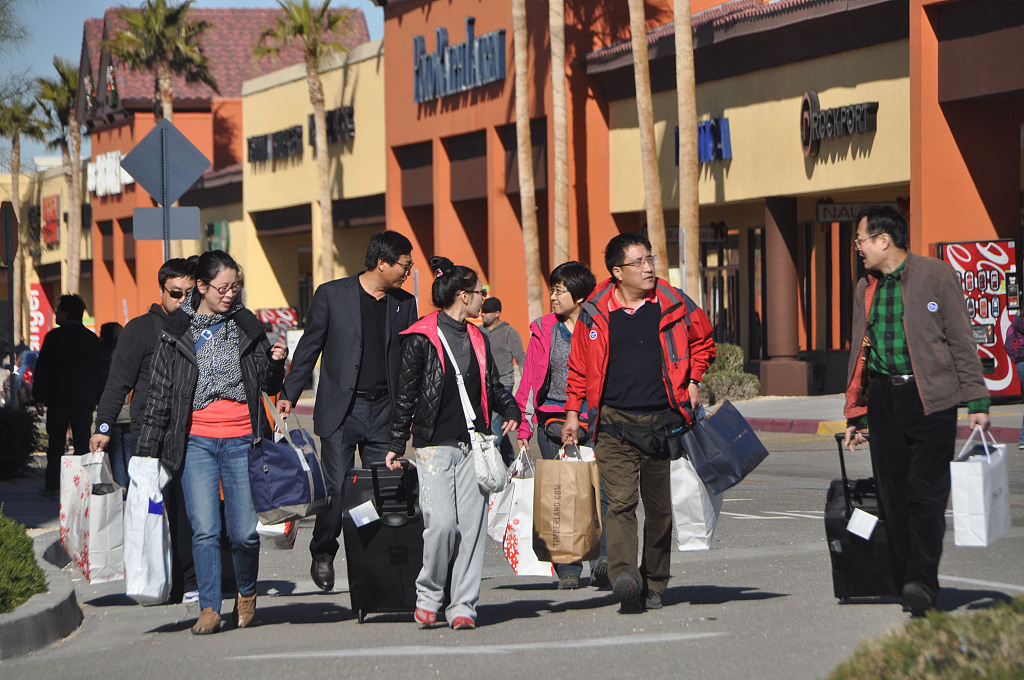

As tensions between the two largest economies escalate, Chinese tourism to the U.S. is becoming a trickle. Given escalating political and trade tensions between the largest two economies, will politics derail tourism?
"A weaker yuan dampens my passion to visit the United States, in addition to a probably longer waiting period for a tourist visa," said Qi, my "travelholic" friend.
In fact, a number of my friends are hesitant in their plans to visit the primitive wilderness of Yosemite, the iconic Golden Gate Bridge, the gentrifying Brooklyn neighborhoods and the glistening White Sands National Monument.
Figures talk
Figures from the U.S. National Travel and Tourism Office show that the number of Chinese visitors to the U.S. dropped by 5.7 percent in 2018, the first time that Chinese travel slipped since 2003. The downslide continues into this year, with a year-on-year decline of 2.2 percent in Chinese tourist arrivals over the first half of 2019.
Tourism Economics, a journal under the leading economic services firm Oxford Economics, projected late last month that "hostile trade relations, travel advisories and rising currency exchange rates" could result in "two million fewer Chinese tourists" through next year. The decline to 2.9 million visitors last year alone incurred a loss of some two billion U.S. dollars. The journal calculates that total lost expenditure could amount to 11 billion U.S. dollars since the start of the trade war in early 2018.
In a separate study by Bank of America Merrill Lynch, the number of Chinese tourists is projected to decrease by half in a worst-case scenario, leading to a loss of up to 18 billion U.S. dollars.

Chinese tourists shopping at an outlets center in the United States, December 27, 2011. /VCG Photo
Big spenders
Though China is the third largest overseas market for tourist arrivals in the U.S., a typical Chinese visitor spent an average of 6,700 U.S. dollars per trip in 2017, 50 percent more than the average international visitors, according to the U.S. Travel Association. In comparison, a typical tourist from the UK – the biggest overseas market for the U.S. – spends 2,500 U.S. dollars.
The revenue plunge has taken a toll on the tourism industry, affecting airlines, the hospitality sector, retail sales, and even casinos.
Airlines
For the National Day holiday – a time when many middle-class Chinese families go on long journeys – Chinese flight bookings to the U.S. dropped by 42 percent. That was the figure from last year. For the upcoming golden week this year, the situation could be worse.
Hawaii Airlines suspended its direct flights between Beijing and Honolulu – a route that began operating in 2014 – by the end of 2018, and Air China pulled out of the same service a few days ago, citing falling demands. For the first six months of 2019, the number of Chinese tourists was down by 36 percent year on year, the local tourism authority reported.
Hospitality
A Los Angeles hotel long popular with Chinese travelers saw a 23-percent decline last year and fell by another 10 percent as of June this year, according to a report by the New York Times.
The capital Washington, DC, a must-see destination for many Chinese visitors in the U.S., saw a quarter fewer Chinese in 2018. “I no longer want to go there because of the political tensions there,” said Qi. Her mindset actually mirrors that of many Chinese travelers, who feel increasingly unwelcome in the U.S. due to its more aggressive rhetoric toward China.

The Bellagio hotel and casino in downtown Las Vegas, U.S. /VCG Photo
Retail
Meanwhile, ginseng stores in New York City's Chinatown is suffering due to fewer Chinese business people and travelers. Ginseng is a highly-prized herb in China, and the American variety is considered high-end in the Chinese market. "The tariff hike has scared away the Chinese who used to buy high-quality American ginseng in bulk," a shop owner told CGTN.
Besides herbal products, China's nouveau riche and burgeoning deep-pocketed middle class are satiating their appetite for luxury goods, but high-end retail has also taken a hit.
The iconic Tiffany & Co. announced a sales decline of more than 25 percent among Chinese tourists in the first quarter of this year.
Casinos
Splurging money in the City of Sin is undoubtedly popular among Chinese tourists. However, there are signs of weaker gambling trends for Asians in Las Vegas. Bank of America analyst Andrew Didora told CNBC that revenues for baccarat is down 26 percent from a year ago. The game is popular among Asian consumers.
This could be a problem, as visitors spent about 36 billion U.S. dollars in Las Vegas last year, according to the Las Vegas Convention and Visitors Authority. The tourism industry itself props up 39 percent of southern Nevada's workforce.

Holiday decorations are displayed outside the Tiffany & Co. store on Fifth Avenue in New York, U.S., November 28, 2011. /VCG Photo
The United States has been courting Chinese tourists for a while now, easing visa restrictions and providing local language services at key tourist sites. During the Obama years, two pieces of travel legislation were signed into law – the Travel Promotion Act and Native Travel Act.
Meanwhile, the Chinese got richer and air travel became more convenient, with an increasing number of non-stop flights. From 2000 to 2010, the number of Chinese travelers to the U.S. tripled, and then tripled again in 2015. Moreover, the U.S. ran a travel and tourism trade surplus of 28 billion U.S. dollars with China last year.
As the trade war drags on and the political environment turns hostile, can politics still be kept out of an overwhelmingly positive trend?

Copyright © 2018 CGTN. Beijing ICP prepared NO.16065310-3
Copyright © 2018 CGTN. Beijing ICP prepared NO.16065310-3